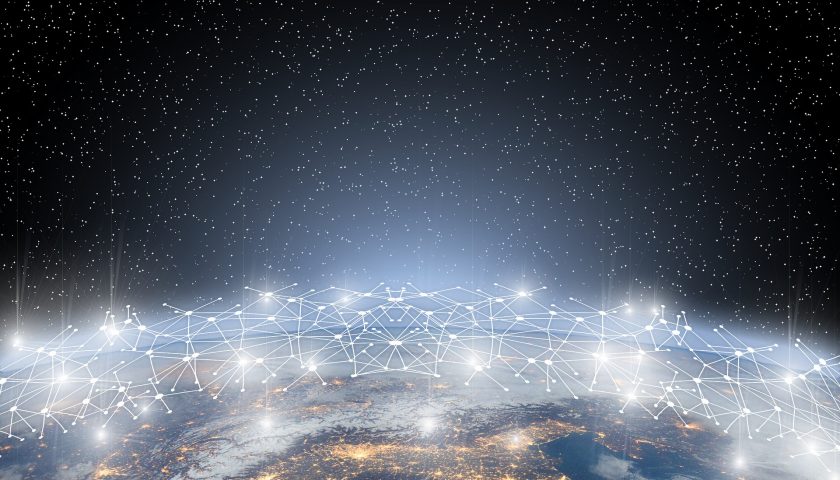
5G growth will be great in APAC, but what does that mean for CIOs?
Telecommunication operators in APAC plan to invest over US$400 billion on their networks between 2020 and 2025. Of this, US$331 billion will be spent on 5G deployments, according to the latest Asia Pacific edition of the GSMA’s Mobile Economy series.
The study also highlights countries in the region, that are home to some of the most advanced 5G markets in the world, with nine markets having launched commercial mobile 5G services – including Japan at the end of March – and 12 more having officially announced plans.
According to the GSMA the impact of COVID-19 on 5G growth will be greater in Asia Pacific, since the region is home to some of the first 5G networks, compared to other areas where many markets have yet to launch 5G. GSMA also revised its forecast for the region and now expects the total number of 5G connections will be almost 20 per cent lower in 2020 in Asia Pacific than previously expected.
What does this mean for CIOs in the region? KPMG analysts from around the region talked to CIO Tech Asia about how this will be a game changer for senior IT decision makers.
Weir Li digital transformation expert based in China at KPMG said 5G is not just a new network, it will affect all aspects of people’s lives and work. As 5G makes a huge leap in speed, capacity and connectivity, new products, services, business models and complete industries will emerge.
“Technology like 4G allows everyone to communicate and connect,” he said. “5G makes everything connected. The vast outlook for 5G has prompted the enterprise to re-examine their network architecture.”
According to Li at present 5G infrastructure and services are still in the early stage, the enterprise should start to develop the calculation strategy, the storage strategy, and the network strategy.
“As soon as 5G deployment is complete, the way the network delivery will be simpler, and computing, storage and other work will be done on the edge,” he said.
The data that can be newly collected by 5G with its characteristics and attributes will be a lot more complex, for example employee face information, factory production and equipment control information. It will also allow for network slicing technology. Which will help with managing the traffic of a specific application that is mission-critical separately from other traffic.
Managing the data collected by 5G will be Cloud/on-premises, edge server/central management server, presence or absence of access restrictions and its scope.
“5G is a game-changing, because it’s an enabler that will unleash the potential of Industrial Internet of Things (IIoT), for real time and large-scale operations remotely through the use of cloud and connected devices,” said Lyon Poh head of digital and technology Singapore KPMG. “It’s an enabler to accelerate industry 4.0 transformation.
Li said from a business perspective, 5G will bring about great change, with the next generation of connections will improve the ability of organisations to connect intelligent technologies and integrate different data, thus providing them with better insight and new opportunities.
“5G networks will help organisations transform their daily operations in three main ways,” he said.
- They will help improve the user experience through high reliability, ultra-low latency, and high-speed delivery.
- 5G will help organisations subvert markets by enabling new business models and revenue streams.
- 5G networks will help enterprises change their way of operation, whether it is through intelligent technology to improve productivity, reduce costs through automation and machine learning, or discover new opportunities through artificial intelligence.
5G network will:
- Reduce cost by optimising data management, with unnecessary data is processed locally at the edge to reduce communication costs and data centre costs.
- Improve the quality of IT services through detailed network management through network slicing.
- Mitigate cyber security risk.
- Improve business and create new business by effective use of data.
- Maximise return on investment for 5G by optimising upgrade from existing system.
“Fundamentally, it helps to transform business models and operations in the post-COVID era that has shifted towards contactless and low touch economy,” said Poh. “Organisations that have significant operational technology will have a new level of understanding of their service delivery ecosystem to provide higher levels of client service through newly adaptive and innovative ways.
According to Mun-Gu Park partner in the Digital Transformation Canter of Excellence at KPMG in Korea said the technology provides a wireless infrastructure for work that is completely isolated from the external Internet environment and ensures an optimised environment for applying new technologies and services such as AI and big data.
While 5G technology can help enterprises improve efficiency, production, and innovation breakthroughs, and reduce costs, it has yet to be fully deployed.
“The CIO can now begin to prepare and organise to brief to the leadership on the potential for technological change and early opportunities for network investment, with the ultimate goal of improving the completion of the entire digital journey,” said Li. “Specific domains concerned include investment budgeting, planning new waves of automation and artificial intelligence, strengthening big data analysis ,5G concept education, and developing the final 5G strategy to prepare for today’s technology to achieve the performance improvements that the technology provides.”
It is recognised that 5G will increase the amount of data, Cloud, and IoT devices, with that there will also be an increase in cyber security risk will increase, and some measures must be taken. However, it is expected that there are many cases where it has not been possible to create a concrete action plan – what security measures to be taken, risk analysis methods, business risk assessment based on the analysis.
When it comes to utilisation and operation methods of data acquired in 5G, telecommunications carriers are also trial-and-error with solutions in cooperation with end-user companies. In some cases, CIO and CISO are leading the introduction of 5G, but there are many cases where the field representatives and business departments are taking the lead in considering the introduction.
“5G will open new cross border possibilities to create, store and protect economic value, move money and give access to credit in real time,” said Poh. “For more services orientated organisations, we see that service delivery will move to low-friction real time model e.g. customers expect payments instantly over smart phones, and new channels will arise though smartphones, wearables, IoT assets and augmented reality. It accelerates the speed with which customer will experience change. This is something for all CIOs/CISOs to think about.”
In Australia Nikos Katinakis group executive networks and IT at Telstra told CIO Tech Asia, the objective of 5GFF is to create a set of specifications and APIs that can be used to enable the broader adoption of edge compute or mobile edge compute. The specifications will enable the global interoperability of applications and capabilities that utilise 5G and MEC (Multi Access Edge Compute).
“Edge, whether a private edge or a network edge, brings the capabilities of a public cloud and/or a private cloud closer to the point of consumption and combines these capabilities with what the network can offer,” he said. “These new capabilities will allow CIOs and senior IT decision makers to have a seamless global experience, have more choices on how their applications are consumed, give them more capabilities to incorporate into their applications and enable more use cases that can be used to automate processes, or create new areas of monetisation or cost reduction.”
According to Katinakis publishing a set of specifications that cover both physical frameworks (such as power, cooling, monitoring, site security, etc) and API exposure capabilities of both public cloud and service providers.
“It helps streamline the process of setting up an edge compute site (on 5G or other access technology) and allows the CIOs and senior IT leaders to focus on the placement of their workloads instead of worrying about non standard implementations,” he said. “The standard APIs also enable IT departments to enhance the capabilities of their own applications and developers of applications on the public cloud to further enhance their offerings, ultimately leading to more choices with more functionality.”
However Scott Bayliss, CIO at the Department for Education South Australia said 5G isn’t something the Department is looking at currently because it’s so new.
“We’ve just finished rolling in a high-speed fibre cable to 98 per cent of our schools across the State,” he said. “That’s what we’ve invested in because the technology exists today, and we know it’s reliable. Once it’s in the ground in a school, it’s not going anywhere.”




